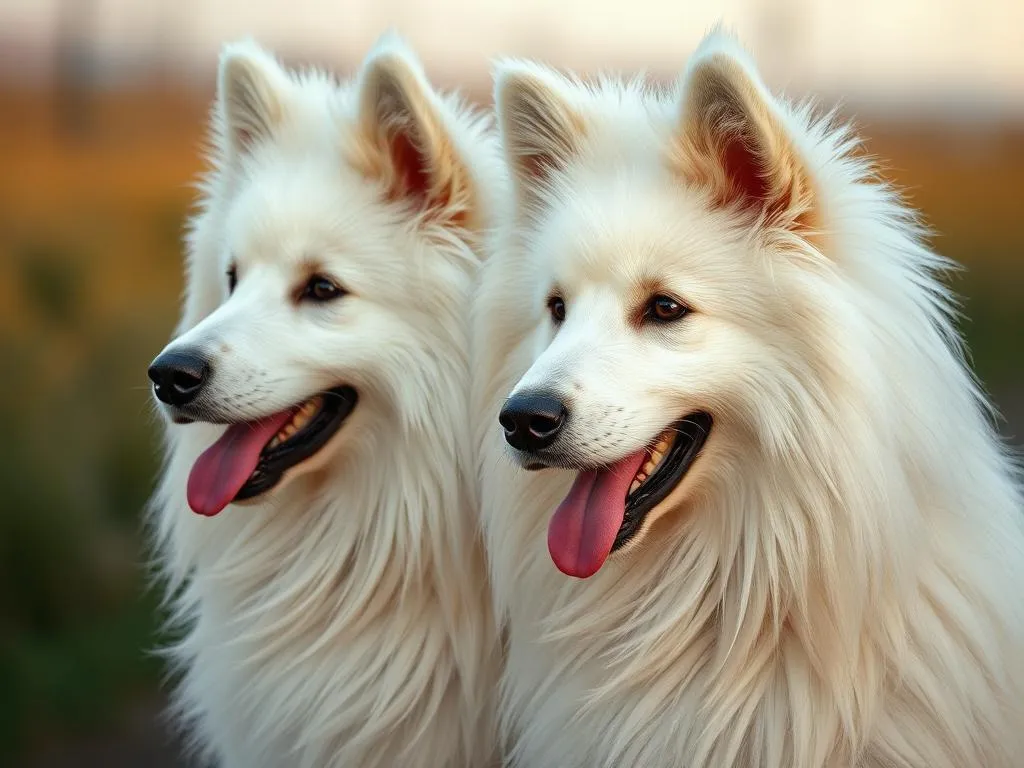
The Samoyed breed is one of the most captivating and beloved dog breeds, known for its fluffy white coat and charming smile. Understanding the origins and purposes behind their breeding is crucial for appreciating their unique characteristics and roles in modern society. This article delves into the history, traits, and contemporary roles of Samoyeds, providing a comprehensive look at what they were bred for and how that influences their behavior and care today.
History of the Samoyed Breed
Origins
The Samoyed dog breed originates from Siberia, where it was developed by the nomadic Samoyedic people. These indigenous tribes relied heavily on the Samoyed dogs for their daily survival. The breed’s history is intertwined with that of the Samoyedic tribes, who lived in harsh Arctic conditions and depended on reindeer for sustenance. The dogs were an integral part of their lifestyle, serving multiple purposes that were essential for the tribes’ survival.
Purpose of Breeding
Initially, Samoyeds were bred for various practical purposes. One of their primary roles was herding reindeer, which provided food, clothing, and materials for shelter. They were also used for pulling sleds, helping the tribes travel across the snowy terrain. Additionally, the Samoyed served as companions, a vital support for the tribes during their nomadic lifestyle. The significance of this breed in Samoyedic culture cannot be overstated; they were not just working animals but also cherished members of the family.
Evolution Over Time
As time progressed, the role of the Samoyed began to evolve. With the advent of more advanced technology and changes in lifestyle, the need for working dogs diminished. Today, the focus has shifted from their traditional working roles to more companionship-oriented purposes. While some Samoyeds still participate in sledding and other working roles, most are now cherished family pets, living comfortably in homes rather than in the harsh landscapes of their ancestors.
Characteristics of Samoyeds
Physical Traits
Samoyeds are known for their distinct physical appearance. They are medium-sized dogs, typically weighing between 35 to 65 pounds and standing about 19 to 24 inches tall at the shoulder. Their most striking feature is their thick, fluffy white coat, which helps them withstand extremely cold temperatures. This coat can also come in shades of cream and biscuit.
One of the unique features of the Samoyed is their “Sammy smile,” a characteristic expression that gives them a friendly and approachable look. Their dark, almond-shaped eyes and erect ears further enhance their charming appearance, making them one of the most recognizable breeds.
Temperament
The temperament of Samoyeds is another reason for their popularity. They are generally friendly, gentle, and playful dogs, making them excellent companions for families. Their intelligence is notable, and they tend to be highly trainable, which is beneficial for obedience training.
Samoyeds are social animals that thrive on human interaction and companionship. They are known to get along well with children and other pets, making them ideal additions to family homes. However, their social nature means they can suffer from separation anxiety if left alone for extended periods.
Roles of Samoyeds Today
Working Roles
Despite the shift towards companionship, Samoyeds still retain their working instincts. They are often involved in various modern roles, such as sledding, therapy, and service dogs. Many organizations utilize Samoyeds for therapy work due to their friendly demeanor and ability to connect with people, especially in hospitals and nursing homes.
In sledding competitions, Samoyeds showcase their strength and endurance, proving that they still excel in the roles for which they were originally bred. Their historical background as working dogs gives them an edge in these activities, allowing them to thrive even in competitive environments.
Companion Animals
The rise in popularity of Samoyeds as family pets has been significant over the years. Their friendly nature, coupled with their striking appearance, makes them appealing to many dog lovers. However, prospective owners should understand the lifestyle needs of Samoyeds before bringing one into their home.
Samoyeds require a significant amount of exercise to maintain their health and happiness. Daily walks, playtime, and mental stimulation are essential to keep them engaged. They are well-suited for active families who can provide the exercise and companionship they crave.
Show Dogs
Samoyeds also participate in dog shows and competitions, where their beauty and temperament are judged. In these settings, certain characteristics are especially valued, such as coat quality, structure, and overall demeanor. Breeders often focus on these traits to produce show-quality Samoyeds that meet breed standards, ensuring the continuation of the breed’s legacy.
Care and Maintenance of Samoyeds
Grooming Requirements
The grooming needs of Samoyeds are significant due to their thick double coat. Regular brushing is essential to manage shedding and prevent matting. During shedding season, which typically occurs twice a year, they may require more frequent brushing to keep their coat healthy and reduce hair around the house.
Bathing should be done as needed, not too frequently, to maintain skin health and the natural oils in their coat. A proper grooming routine can also help prevent skin issues that may arise from neglect.
Exercise and Activity Levels
Samoyeds are energetic dogs that require daily exercise to stay healthy and happy. They thrive in active environments and enjoy activities such as hiking, running, and playing fetch. Engaging them in physical activities not only helps expend their energy but also strengthens the bond between dog and owner.
A lack of physical activity can lead to behavioral issues, as Samoyeds may become bored and destructive if they do not receive the exercise they need.
Health Considerations
As with any breed, Samoyeds can be prone to specific health issues. Common concerns include hip dysplasia, progressive retinal atrophy, and skin conditions. Regular veterinary check-ups and preventative care are crucial to maintaining their health.
Prospective owners should be aware of these potential health issues and consider seeking out reputable breeders who perform health screenings on their breeding stock. This proactive approach can help ensure a healthier, happier Samoyed.
Training and Socialization
Basics of Training
Training is a critical component of raising a well-adjusted Samoyed. Early training and socialization are vital to help them develop into well-mannered adults. Positive reinforcement methods, such as treats and praise, work best with this breed, as they respond well to encouragement.
Socialization with other dogs, pets, and various environments is essential to ensure they are comfortable in different situations. This exposure helps prevent behavioral issues that may arise from anxiety or fear.
Behavioral Challenges
While Samoyeds are generally friendly and trainable, they can exhibit behavioral challenges, particularly due to their history as working dogs. Issues like separation anxiety and stubbornness can arise, making training more difficult at times.
To mitigate these challenges, consistency in training and providing a structured routine can be beneficial. Engaging them in mental stimulation activities, such as puzzle toys or agility training, can also help channel their energy positively.
Conclusion
In summary, understanding what Samoyeds were bred for provides valuable insights into their behavior, care, and roles in modern society. From their origins with the nomadic Samoyedic people to their evolution into beloved family pets, Samoyeds have maintained their friendly and sociable nature.
Prospective owners should consider the breed’s history, characteristics, and care requirements before bringing a Samoyed into their home. By respecting and preserving the breed’s heritage, we can ensure that these beautiful dogs continue to thrive in our lives for generations to come.
Key Takeaways
- Samoyeds were originally bred for herding reindeer, pulling sleds, and providing companionship.
- Their friendly temperament and distinctive physical traits make them popular pets today.
- Proper care, grooming, and exercise are essential to maintaining their well-being.
- Early training and socialization are crucial to prevent behavioral issues.
Understanding the rich history and unique characteristics of Samoyeds enriches our appreciation for this remarkable breed and underscores the importance of responsible ownership and care.









